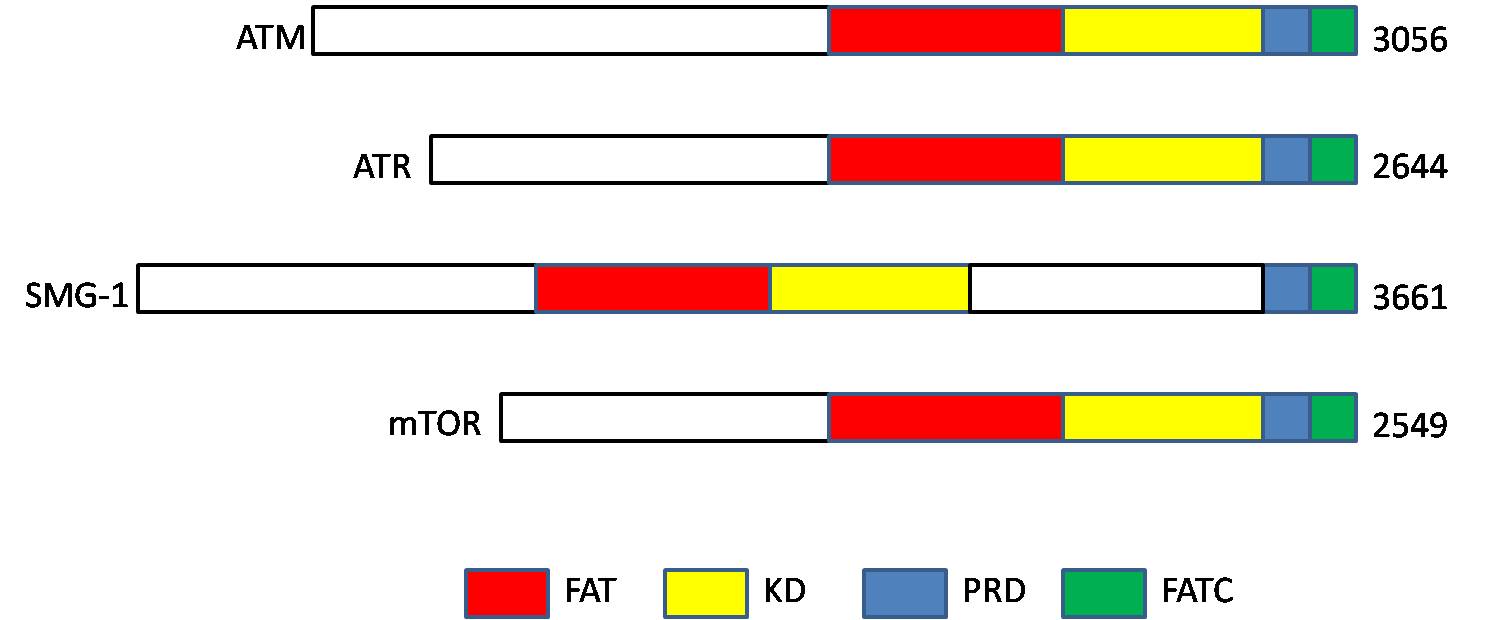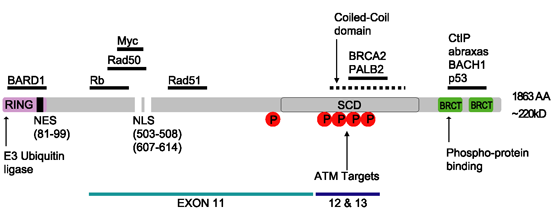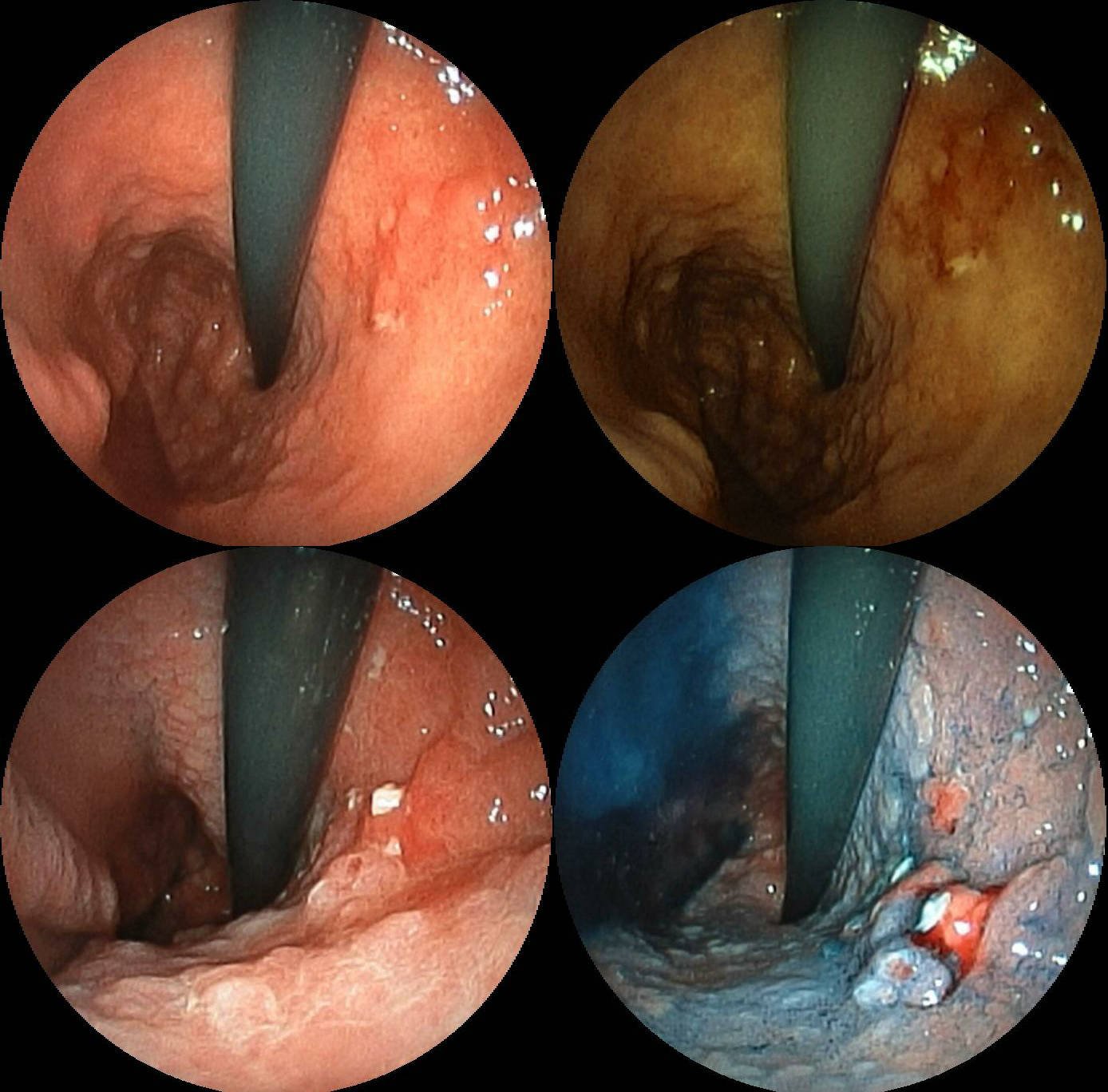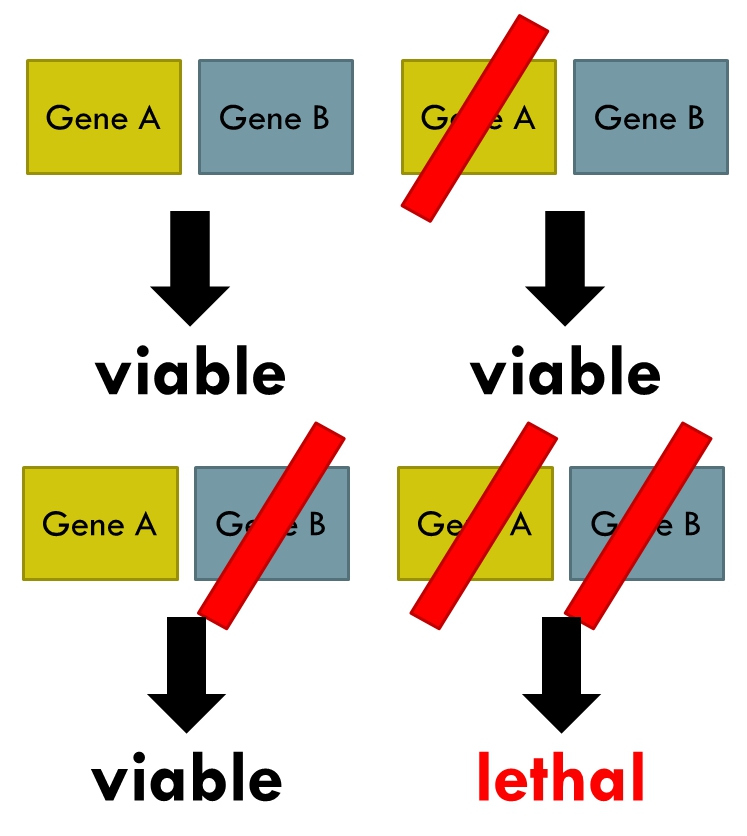|
RBBP8
Retinoblastoma-binding protein 8 is a protein that in humans is encoded by the ''RBBP8'' gene. Function The protein encoded by this gene is a ubiquitously expressed nuclear protein. It is found among several proteins that bind directly to retinoblastoma protein, which regulates cell proliferation. This protein complexes with transcriptional co-repressor CTBP. It is also associated with BRCA1 and is thought to modulate the functions of BRCA1 in transcriptional regulation, DNA repair, and/or cell cycle checkpoint control. It is suggested that this gene may itself be a tumor suppressor acting in the same pathway as BRCA1. Three transcript variants encoding two different isoforms have been found for this gene. More transcript variants exist, but their full-length natures have not been determined. DNA repair RBBP8 is involved in the DNA repair process of homologous recombination. It was proposed that, in gastric cancer cells, inhibition of RBBP8 expression could cause a synthetic ... [...More Info...] [...Related Items...] OR: [Wikipedia] [Google] [Baidu] |
Ataxia Telangiectasia Mutated
ATM serine/threonine kinase or Ataxia-telangiectasia mutated, symbol ATM, is a serine/threonine protein kinase that is recruited and activated by DNA repair#Double-strand breaks, DNA double-strand breaks (Canonical pathway, canonical pathway), oxidative stress, topoisomerase cleavage complexes, splicing intermediates, R-loops and in some cases by DNA repair, single-strand DNA breaks. It phosphorylates several key proteins that initiate activation of the DNA damage cell cycle checkpoint, checkpoint, leading to cell cycle arrest, DNA repair or apoptosis. Several of these targets, including p53, CHK2, BRCA1, NBS1 and H2AX are tumor suppressors. In 1995, the gene was discovered by Yosef Shiloh who named its product ATM since he found that its mutations are responsible for the disorder ataxia–telangiectasia#Cause, ataxia–telangiectasia. In 1998, the Shiloh and Michael B. Kastan, Kastan laboratories independently showed that ATM is a protein kinase whose activity is enhanced by DNA ... [...More Info...] [...Related Items...] OR: [Wikipedia] [Google] [Baidu] |
BRCA1
Breast cancer type 1 susceptibility protein is a protein that in humans is encoded by the ''BRCA1'' () gene. Orthologs are common in other vertebrate species, whereas invertebrate genomes may encode a more distantly related gene. ''BRCA1'' is a human tumor suppressor gene (also known as a caretaker gene) and is responsible for repairing DNA. ''BRCA1'' and ''BRCA2'' are unrelated proteins, but both are normally expressed in the cells of breast and other tissues, where they help repair damaged DNA, or destroy cells if DNA cannot be repaired. They are involved in the repair of chromosomal damage with an important role in the error-free repair of DNA double-strand breaks. If ''BRCA1'' or ''BRCA2'' itself is damaged by a BRCA mutation, damaged DNA is not repaired properly, and this increases the risk for breast cancer. ''BRCA1'' and ''BRCA2'' have been described as "breast cancer susceptibility genes" and "breast cancer susceptibility proteins". The predominant allele has a no ... [...More Info...] [...Related Items...] OR: [Wikipedia] [Google] [Baidu] |
CTBP1
C-terminal-binding protein 1 also known as CtBP1 is a protein that in humans is encoded by the ''CTBP1'' gene. CtBP1 is one of two CtBP proteins, the other protein being CtBP2. Function The CtBP1 protein was originally identified as a human protein that bound a PLDLS motif in the C-terminus of adenovirus E1A proteins. It and the related protein CTBP2 were later shown to function as transcriptional corepressors. That is, regulatory proteins that bind to sequence-specific DNA-binding proteins and help turn genes off. CtBPs do this by recruiting histone modifying enzymes that add repressive histone marks and remove activating marks. CtBP proteins can also self-associate and presumably bring together gene regulatory complexes. CtBP1 is broadly expressed from embryo to adult, while CtBP2 has a somewhat more restricted pattern of expression. CtBPs have multiple biological roles and appear to be most important in regulating the epithelial to mesenchymal transition, as well as influencin ... [...More Info...] [...Related Items...] OR: [Wikipedia] [Google] [Baidu] |
LMO4
LIM domain transcription factor LMO4 is a protein that in humans is encoded by the ''LMO4'' gene. LIM domain only 4 is a cysteine-rich, two LIM domain-containing protein that may play a role as a transcriptional regulator or possibly an oncogene. Its mRNA is characterized by a GC-rich 5' region and by multiple ATTT motifs in the 3' region. A variant transcript missing a portion of the 5' region has been identified but cannot be confirmed because of the GC-rich nature of the region. Clinical Significance LMO4 has garnered significant attention for its involvement in cancer, particularly breast cancer. It is overexpressed in a substantial percentage of primary breast carcinomas. Studies have shown that LMO4 can promote the proliferation of mammary epithelial cells, inhibit their differentiation, and enhance cell invasion and motility, all of which are hallmarks of cancer progression. Interactions LMO4 has been shown to interact with LDB1, RBBP8 and BRCA1 Breast cancer type 1 s ... [...More Info...] [...Related Items...] OR: [Wikipedia] [Google] [Baidu] |
Retinoblastoma-like Protein 1
Retinoblastoma-like 1 (p107), also known as RBL1, is a protein that in humans is encoded by the ''RBL1'' gene. Function The protein encoded by this gene is similar in sequence and possibly function to the product of the retinoblastoma 1 ( RB1) gene. The RB1 gene product is a tumor suppressor protein that appears to be involved in cell cycle The cell cycle, or cell-division cycle, is the sequential series of events that take place in a cell (biology), cell that causes it to divide into two daughter cells. These events include the growth of the cell, duplication of its DNA (DNA re ... regulation, as it is phosphorylated in the S to M phase transition and is dephosphorylated in the G1 phase of the cell cycle. Both the RB1 protein and the product of this gene can form a complex with adenovirus E1A protein and SV40 Large T-antigen, with the SV40 large T-antigen binding only to the unphosphorylated form of each protein. In addition, both proteins can inhibit the transcri ... [...More Info...] [...Related Items...] OR: [Wikipedia] [Google] [Baidu] |
Retinoblastoma-like Protein 2
Retinoblastoma-like protein 2 is a protein that in humans is encoded by the ''RBL2'' gene. RBL2 is one of three retinoblastoma proteins encoded in the human genome (along with Rb and RBL1). Interactions Retinoblastoma-like protein 2 has been shown to interact with: * BRCA1, * BRF1 * C-Raf, * Cyclin E1, * Cyclin-dependent kinase 2 Cyclin-dependent kinase 2, also known as cell division protein kinase 2, or Cdk2, is an enzyme that in humans is encoded by the ''CDK2'' gene. The protein encoded by this gene is a member of the cyclin-dependent kinase family of Ser/Thr protein ..., * HDAC1, * Prohibitin, and * RBBP8. Human disease Mutations in RBL2 have been linked to a severe neurodevelopmental disorder characterised by morphological and behavioural abnormalities. Symptoms include intellectual disability, developmental delay, microcephaly, dysmorphic features, gait abnormalities, and seizures. The genetic basis of RBL2-linked disease is caused by bi-alleli ... [...More Info...] [...Related Items...] OR: [Wikipedia] [Google] [Baidu] |
Protein
Proteins are large biomolecules and macromolecules that comprise one or more long chains of amino acid residue (biochemistry), residues. Proteins perform a vast array of functions within organisms, including Enzyme catalysis, catalysing metabolic reactions, DNA replication, Cell signaling, responding to stimuli, providing Cytoskeleton, structure to cells and Fibrous protein, organisms, and Intracellular transport, transporting molecules from one location to another. Proteins differ from one another primarily in their sequence of amino acids, which is dictated by the Nucleic acid sequence, nucleotide sequence of their genes, and which usually results in protein folding into a specific Protein structure, 3D structure that determines its activity. A linear chain of amino acid residues is called a polypeptide. A protein contains at least one long polypeptide. Short polypeptides, containing less than 20–30 residues, are rarely considered to be proteins and are commonly called pep ... [...More Info...] [...Related Items...] OR: [Wikipedia] [Google] [Baidu] |
Gene
In biology, the word gene has two meanings. The Mendelian gene is a basic unit of heredity. The molecular gene is a sequence of nucleotides in DNA that is transcribed to produce a functional RNA. There are two types of molecular genes: protein-coding genes and non-coding genes. During gene expression (the synthesis of Gene product, RNA or protein from a gene), DNA is first transcription (biology), copied into RNA. RNA can be non-coding RNA, directly functional or be the intermediate protein biosynthesis, template for the synthesis of a protein. The transmission of genes to an organism's offspring, is the basis of the inheritance of phenotypic traits from one generation to the next. These genes make up different DNA sequences, together called a genotype, that is specific to every given individual, within the gene pool of the population (biology), population of a given species. The genotype, along with environmental and developmental factors, ultimately determines the phenotype ... [...More Info...] [...Related Items...] OR: [Wikipedia] [Google] [Baidu] |
DNA Repair
DNA repair is a collection of processes by which a cell (biology), cell identifies and corrects damage to the DNA molecules that encode its genome. A weakened capacity for DNA repair is a risk factor for the development of cancer. DNA is constantly modified in Cell (biology), cells, by internal metabolism, metabolic by-products, and by external ionizing radiation, ultraviolet light, and medicines, resulting in spontaneous DNA damage involving tens of thousands of individual molecular lesions per cell per day. DNA modifications can also be programmed. Molecular lesions can cause structural damage to the DNA molecule, and can alter or eliminate the cell's ability for Transcription (biology), transcription and gene expression. Other lesions may induce potentially harmful mutations in the cell's genome, which affect the survival of its daughter cells following mitosis. Consequently, DNA repair as part of the DNA damage response (DDR) is constantly active. When normal repair proce ... [...More Info...] [...Related Items...] OR: [Wikipedia] [Google] [Baidu] |
Homologous Recombination
Homologous recombination is a type of genetic recombination in which genetic information is exchanged between two similar or identical molecules of double-stranded or single-stranded nucleic acids (usually DNA as in Cell (biology), cellular organisms but may be also RNA in viruses). Homologous recombination is widely used by cells to accurately DNA repair, repair harmful DNA breaks that occur on both strands of DNA, known as double-strand breaks (DSB), in a process called homologous recombinational repair (HRR). Homologous recombination also produces new combinations of DNA sequences during meiosis, the process by which eukaryotes make gamete cells, like sperm and ovum, egg cells in animals. These new combinations of DNA represent genetic variation in offspring, which in turn enables populations to Adaptation, adapt during the course of evolution. Homologous recombination is also used in horizontal gene transfer to exchange genetic material between different strains and species ... [...More Info...] [...Related Items...] OR: [Wikipedia] [Google] [Baidu] |
Stomach Cancer
Stomach cancer, also known as gastric cancer, is a malignant tumor of the stomach. It is a cancer that develops in the Gastric mucosa, lining of the stomach. Most cases of stomach cancers are gastric carcinomas, which can be divided into a number of subtypes, including gastric adenocarcinomas. Lymphomas and mesenchymal tumors may also develop in the stomach. Early symptoms may include heartburn, upper abdominal pain, nausea, and Anorexia (symptom), loss of appetite. Later signs and symptoms may include weight loss, jaundice, yellowing of the skin and whites of the eyes, Hematemesis, vomiting, Dysphagia, difficulty swallowing, and Melena, blood in the stool, among others. The cancer may metastasis, spread from the stomach to other parts of the body, particularly the liver, lungs, bones, peritoneum, lining of the abdomen, and lymph nodes. The bacterium ''Helicobacter pylori'' accounts for more than 60% of cases of stomach cancer. Certain strains of ''H. pylori'' have greater risk ... [...More Info...] [...Related Items...] OR: [Wikipedia] [Google] [Baidu] |
Synthetic Lethality
Synthetic lethality is defined as a type of genetic interaction where the combination of two genetic events results in cell death or death of an organism. Although the foregoing explanation is wider than this, it is common when referring to synthetic lethality to mean the situation arising by virtue of a combination of deficiencies of two or more genes leading to cell death (whether by means of apoptosis or otherwise), whereas a deficiency of only one of these genes does not. In a synthetic lethal genetic screen, it is necessary to begin with a mutation that does not result in cell death, although the effect of that mutation could result in a differing phenotype (slow growth for example), and then systematically test other mutations at additional loci to determine which, in combination with the first mutation, causes cell death arising by way of deficiency or abolition of expression. Synthetic lethality has utility for purposes of molecular targeted cancer therapy. The first exampl ... [...More Info...] [...Related Items...] OR: [Wikipedia] [Google] [Baidu] |





